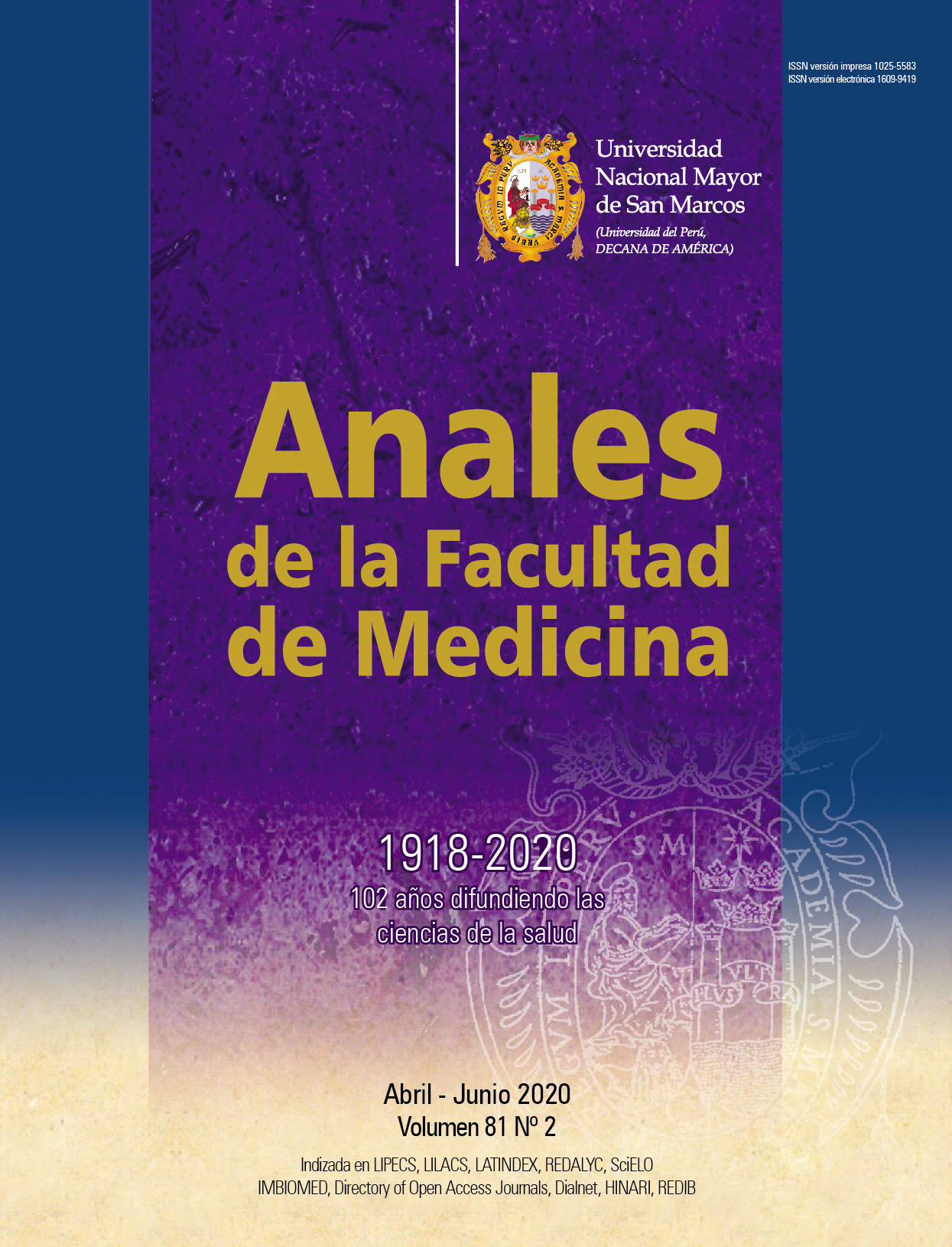Antimicrobial activity of secondary metabolites of Aspergillus fumigatus sensu stricto on clinical strains of Staphylococcus aureus and Streptococcus pneumoniae
DOI:
https://doi.org/10.15381/anales.v81i2.16170Keywords:
Antibacterial agents, Microbial Sensitivity Tests, Aspergillus fumigatus, Alkaloids, Staphylococcus aureus, Streptococcus pneumoniaeAbstract
Introduction. The antibiotic resistance of Gram positive bacteria is a serious public health problem where some palliative measures can be found in the antimicrobial principles of filamentous fungi. Objective. To evaluate the antimicrobial activity of secondary metabolites of a clinical isolation of Aspergillus fumigatus on clinical strains of Staphylococcus aureus and Streptococcus pneumoniae. Methods. The liquid fermentation of A. fumigatus was carried out in a liquid broth sulfate, potato and dextrose; using ethyl acetate for the extraction of secondary metabolites. The antimicrobial activity considered as a halo greater than 6 mm was evaluated using the diffusion disk methodology. Results. A mean of 24,02 ± 2,51 mm and 23,62 ± 4,68 mm was obtained on sensitive and resistant Staphylococcus aureus, respectively. For Streptococcus pneumoniae sensitive and non-susceptible, the means were 25,82 ± 4,05 mm and 26,5 ± 5,39 mm, respectively. Conclusions. The crude extract of A. fumigatus has secondary metabolites of alkaloid nature and unsaturated sterols with antimicrobial activity.
Downloads
Published
Issue
Section
License
Copyright (c) 2020 Anales de la Facultad de Medicina

This work is licensed under a Creative Commons Attribution-NonCommercial-ShareAlike 4.0 International License.
Those authors who have publications with this magazine accept the following terms:
- Authors will retain their copyrights and guarantee the journal the right of first publication of their work, which will be simultaneously subject to Creative Commons Attribution License that allows third parties to share the work as long as its author and its first publication this magazine are indicated.
- Authors may adopt other non-exclusive licensing agreements for the distribution of the version of the published work (eg, deposit it in an institutional electronic file or publish it in a monographic volume) provided that the initial publication in this magazine is indicated.
- Authors are allowed and recommended to disseminate their work over the Internet (eg: in institutional telematic archives or on their website) before and during the submission process, which It can produce interesting exchanges and increase quotes from the published work. (See El efecto del acceso abierto ).



